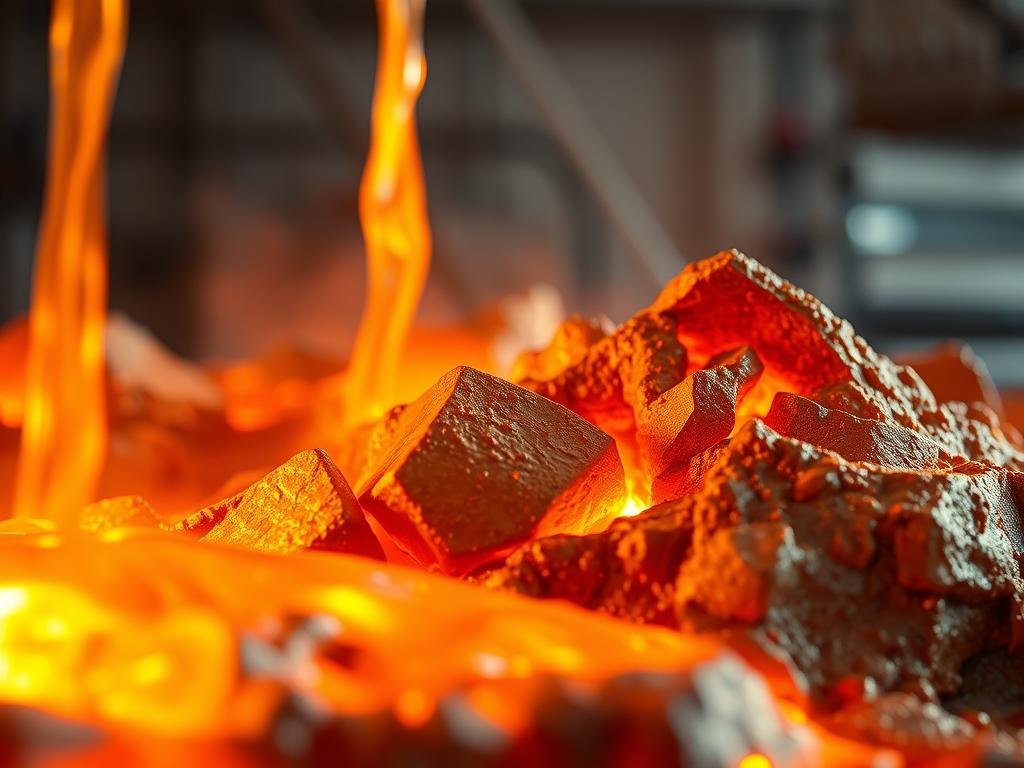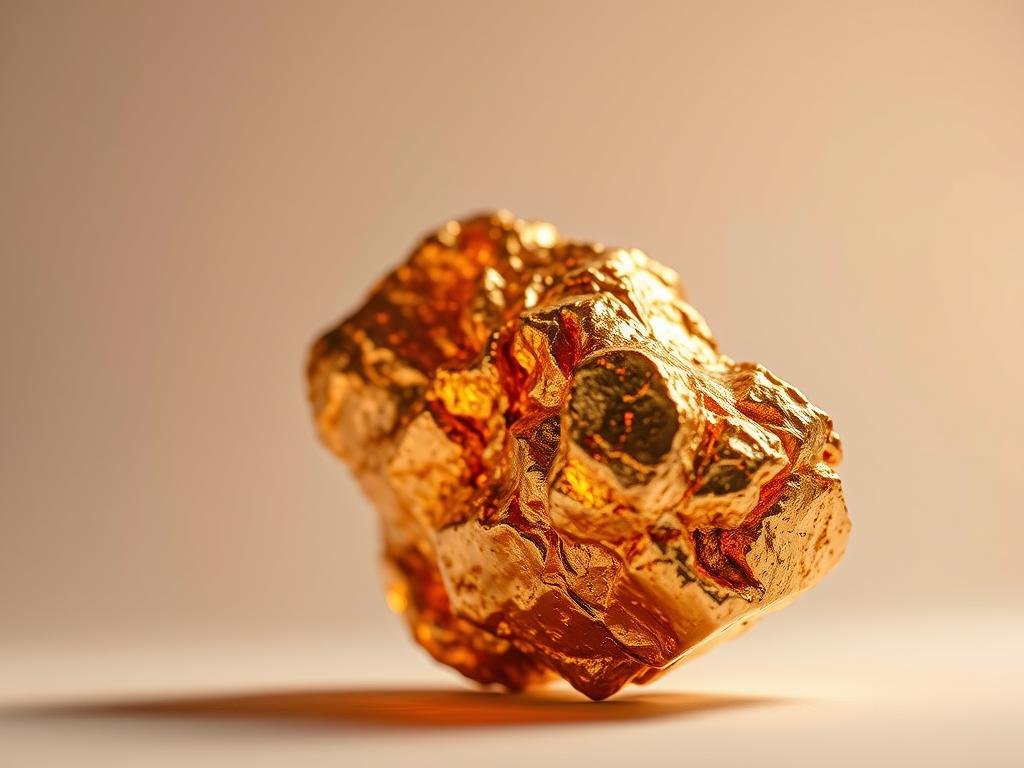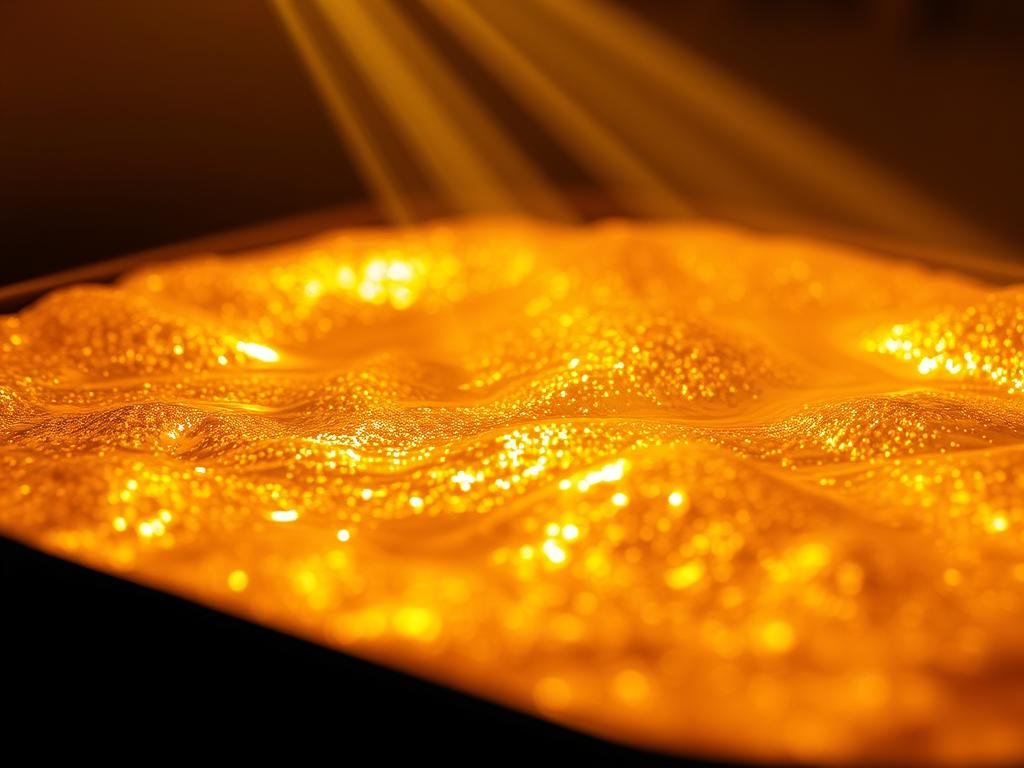Pure gold melts at 1,064°C (1,947°F), a fact that surprises many and reshapes how shops and labs plan work near 1,000°C.
That single temperature — more precisely 1064.18°C — guides casting, tooling, and thermal cycles for jewelry, electronics, and thin sheets. Rapidaccu’s 15+ years in CNC plastic and metal machining shows how control at this threshold affects finish and tolerance.
Core physical properties matter: density, heat of fusion, and thermal conductivity determine flow and cooling. Alloys like 14k melt lower, so processing choices shift when alloys enter the mix.
Understanding the gold melting point and why it matters in manufacturing
Reaching about 1,064°C signals the shift from solid to liquid and drives many tooling and process choices. Rapidaccu brings 15+ years of CNC manufacturing experience to help engineers translate that threshold into practical strategies for casting, machining, tolerances, and finish quality.
Compared with other precious metals, gold melts lower than platinum or palladium but higher than silver. These relative temperatures affect energy use, crucible selection, and refractory choices for shop-floor operations.
Practical impacts include setup of gating and risers, selection of heating method, and decisions about near-net casting versus direct machining. Accurate control of temperature reduces defects like porosity and cold shuts and improves alloy consistency.
- Melting point is an operational threshold that dictates whether to pour, braze, or machine.
- Controlled heat protects surface finish and avoids grain growth during repair.
- Understanding temperatures makes sequencing multi-alloy assemblies predictable and safe.
Rapidaccu uses these principles to recommend machining paths that save cycles while meeting tight tolerances, helping move prototypes to high-volume production without sacrificing quality.
whats is the gold melting point
A single precise setpoint guides casting, soak times, and equipment calibration on the shop floor. Rapidaccu stresses exact conversions so teams hit correct setpoints and protect surface finish.
Pure gold melting temperature: 1,064°C (1,947°F) explained
Pure gold melts at 1064.18°C, which equals 1947.52°F. Treat that numeric value as the production anchor. Reaching a uniform liquid across the charge stabilizes viscosity and improves fill for thin sections.
Celsius vs. Fahrenheit: converting melting points for shop-floor accuracy
Use these formulas for precise conversion: °F = (°C × 9/5) + 32 and °C = (°F − 32) × 5/9. Keep a conversion card at each station to avoid manual errors that cause short pours or overheating.
Beyond melting: boiling temperature and process limits
Boiling occurs around 2970°C (5378°F), far above normal practice. Avoid excess heat: it raises vapor pressure, increases losses, and degrades surface quality without benefit.
- Calibrate thermocouples often; 10–20°C drift affects fill consistency.
- Confirm whether a pyrometer reads surface or melt pool temperature.
- Tight bands around the melting point reduce dross and protect finish.
The science behind melting metals: properties that govern gold’s behavior
Material traits like latent heat, conductivity, and density set how precious metals behave when heated.
This section breaks down those physical factors and links them to shop-floor decisions. Rapidaccu translates these measures into setpoints, soak times, and CNC finishes that tighten tolerances.

From solid to liquid: heat of fusion and phase change
Phase change demands the heat of fusion—12.55 kJ/mol for gold—so temperature can plateau during transition. That latent input explains why longer soak times often improve flow for thin sections.
Comparing metals: higher and lower melting temperatures
Platinum and palladium have higher melting temperatures than gold, while silver melts lower. These differences affect energy needs and sequencing in multi-metal assemblies to avoid remelting nearby parts.
Thermal and electrical transport
High thermal conductivity (318 W/(m·K)) spreads heat quickly, reducing hot spots and promoting consistent solidification. Electrical resistivity (22.14 nΩ·m) affects induction heating efficiency and ramp rates.
Density and flow in molds
With room-temperature density near 19.283 g/cm3 (about 17.31 g/cm3 at melt), liquid gold creates strong head pressure that helps fill fine features when gating is right.
| Property | Gold | Platinum/Palladium | Silver |
|---|---|---|---|
| Heat of fusion | 12.55 kJ/mol | Higher (requires more energy) | Lower (requires less energy) |
| Thermal conductivity | 318 W/(m·K) | Lower than gold | Comparable or slightly lower |
| Typical process impact | Even heating, good flow, strong head pressure | Higher temp crucibles, longer cycles | Faster heats, different gating |
- Viscosity and surface tension govern wetting; fluxes and inert gas help surface quality.
- These properties guide setpoints and cooling rates that Rapidaccu uses to protect finish and accuracy.
- Understanding resistance and expansion informs induction settings and fixture design during cooldown.
Gold alloys and their melting points: how composition changes temperature
Mixing base metals with gold changes when and how an alloy liquefies and fills a mold.
Most jewelry uses alloys with silver, copper, or zinc to get color and strength. That blend creates a melting range rather than a single set temperature. Rapidaccu advises on alloy selection when teams balance workability, heat use, and finish control.
Why 14k and 18k often melt lower than pure metal
Adding silver and copper typically produces a lower melting point. For example, 14k commonly melts near 879°C (1,614°F), well below pure gold’s value.
How other metals affect workability
- Alloying with silver improves fluidity and can be slightly lower in temperature.
- Copper raises strength and alters hue, affecting flow and cooling.
- Zinc widens the melting range and helps deoxidation; palladium adds strength in white alloys.
| Alloy | Typical behavior | Processing note |
|---|---|---|
| 14k (Ag/Cu) | Lower melt, good flow | Lower energy, narrow pour window |
| 18k (Ag/Cu) | Slightly higher than 14k | Tighter control for fine details |
| White (Pd or Ni) | Variable range | May need different crucibles and flux |
Document alloy lot and expected melting points in work instructions. Doing so helps Rapidaccu set torch tips, induction power, and furnace profiles to reduce rework and preserve surface quality.
From casting to CNC: how melting point shapes manufacturing decisions
Part function and finish often determine whether to flow metal or remove it by machining.
Cast processes suit complex cavities and thin features when alloy ranges allow reliable pours near 1064°C for gold alloys. Casting saves time on bulk material removal and supports near-net shapes for many applications.
When to melt versus when to machine
Choose casting when internal geometry and cost of machining from solid would be excessive. Opt for CNC when tight tolerances, stable dimensions, and superior surface finish matter most.
Rapidaccu precision: surface finish and tolerances
Rapidaccu often recommends a hybrid route: cast a near-net blank, then CNC critical features to blueprint accuracy. This balances cycle time and part quality.
| Decision Factor | Casting | CNC / Machining |
|---|---|---|
| Best for | Complex internal shapes, high volume | Tight tolerances, thin walls, fine features |
| Typical issues | Gating, risers, porosity, cleanup | Machine time, tool wear, fixturing |
| Rapidaccu advice | Use when alloy range controlled and cost justified | Choose when dimensional stability matters most |
- Use documented inspection checkpoints after thermal steps.
- Consider total cost: casting adds cleanup; CNC reduces scrap from thermal defects.
- Toolpath strategies must control heat and burrs for fine finishes.
Gold melting techniques and temperature control
Controlled heating strategies protect alloy integrity and deliver consistent pours for precision work. Rapidaccu prioritizes accurate measurement and repeatable profiles to preserve finish and minimize rework.

Induction, torch, and furnace: choosing the right heat source
Induction offers fast, uniform ramps and steady setpoints for repeatable output. Torch work fits very small batches but needs skilled operators to avoid hot spots and contamination. Furnaces provide stable ramps and long soaks for alloy homogenization.
Measuring and maintaining temperature
Use calibrated pyrometers plus embedded thermocouples to confirm melt pool uniformity, not just surface readings. Set soak durations to overcome latent heat and avoid partially solid zones that reduce flow.
Fluxes, crucibles, and atmospheres
Choose flux suited to your alloy to limit oxides and improve wetting. Match crucible composition to alloy chemistry to prevent reactions. Consider inert or reducing atmospheres to protect purity during high exposure.
- Induction for repeatable setpoints near critical values.
- Cross-check pyrometer with thermocouple data before pour.
- Record profiles and outcomes to refine SOPs for consistent quality.
| Method | Best use | Note |
|---|---|---|
| Induction | High repeatability | Fast, uniform heating |
| Torch | Small lots | Operator skill critical |
| Furnace | Large melts | Stable soak control |
Safety, equipment, and best practices for melting metals
Handling liquid metal safely requires plans that cover airflow, gear, and emergency actions before heating begins.
PPE, ventilation, and heat management at high temperatures
Wear heat-resistant gloves, face shields, impact-rated eyewear, aprons, and footwear rated for molten splash. Each worker must have fit-tested protection and routine inspection of gear.
Ventilation must capture fumes and heat without disturbing a melt pool. Local exhaust systems and balanced airflow help limit airborne contaminants.
Handling molten material: pours, sprues, and minimizing oxidation
Preheat molds and sprues to lower thermal shock and improve flow. Control pour height and velocity to reduce turbulence and trapped gas.
- Keep tools dry and prewarmed to avoid steam explosions and spatter.
- Use clean charge and crucibles to limit inclusions and preserve alloy color and behavior.
- Establish clear zones, signage, and radio or hand signals to protect crew during pours.
- Plan and rehearse spill containment and burn response procedures with all team members.
- Handle thin sheets with care after cooling to prevent warps before CNC finishing.
| Item | Best practice | Reason |
|---|---|---|
| PPE | Heat-rated gloves, face shield, apron | Protect against splash and radiant heat |
| Ventilation | Local exhaust, balanced airflow | Remove fumes without disturbing pool |
| Tools | Prewarm and dry | Prevent steam and spatter |
Rapidaccu promotes strict process control to protect teams and preserve part quality. Note gold’s resistance to many acids, yet extreme caution remains essential when working near melting values. Record safety checks and equipment inspections as standard routine.
Applications that rely on gold’s melting point
Many industries rely on controlled heat to turn raw precious metal into precise parts and reliable feedstock. Controlled thermal steps make casting repeatable and safe for high-volume runs.
Jewelry, electronics, and thin sheets: how temperature enables performance
In gold jewelry, precise melts deliver consistent color, flow, and finish across karats. That consistency supports fine detail and reliable joins in intricate designs.
Electronics use gold for corrosion resistance and conductivity. Upstream melts create bars or ingots that are later formed, plated, or machined into contacts and housings.
Thin sheets and foils start from refined stock. Proper thermal control affects rolling behavior, surface quality, and final sheet resistance for specialized uses.
Recycling and refining workflows: reclaiming pure metal efficiently
Recyclers depend on exact temperature control to separate contaminants and maximize recovery. Accurate profiles avoid excess oxidation and limit loss while keeping alloys traceable.
- Mixed-metal assemblies, including gold-silver interfaces, need awareness of each alloy’s range to avoid unintended remelts.
- Platinum and palladium require alternate sequences because they need higher temperatures than gold.
- Documented refining parameters improve lot-to-lot color and mechanical stability for production.
| Application | Primary benefit | Processing note |
|---|---|---|
| Gold jewelry | Controlled flow and consistent color | Adjust alloy and soak for fine details |
| Electronics | High conductivity and corrosion resistance | Refined feedstock then plating or machining |
| Thin sheets | Malleability and surface uniformity | Quality of melt affects rolling and foil draws |
| Recycling/refining | Maximum recovery with low contamination | Precise temperatures separate base metals and impurities |
Rapidaccu supports these applications by finishing cast or wrought parts to tight tolerances. Well-managed thermal inputs cut scrap and stabilize properties across lots.
Conclusion
Practical control of heat and atmosphere turns metallurgy knowledge into repeatable production results. Pure gold melts at 1064.18°C (1947.52°F), and that datum anchors many process choices for casting and finishing.
Compared with metals like platinum and palladium, gold sits between higher melting points and silver’s relatively low range. Understanding gold alloys and their lower melting ranges helps avoid overheating and protects surface quality.
Use clear conversion between Celsius and Fahrenheit, disciplined temperature measurement, and controlled atmospheres to stabilize outcomes. Align process steps with metal melting point data to reduce defects and boost yield.
With 15+ years of CNC experience, Rapidaccu turns these insights into workflows that blend casting, refining, and precision machining for consistent parts and premium finishes. Contact Rapidaccu to review designs and select optimal techniques and equipment.

